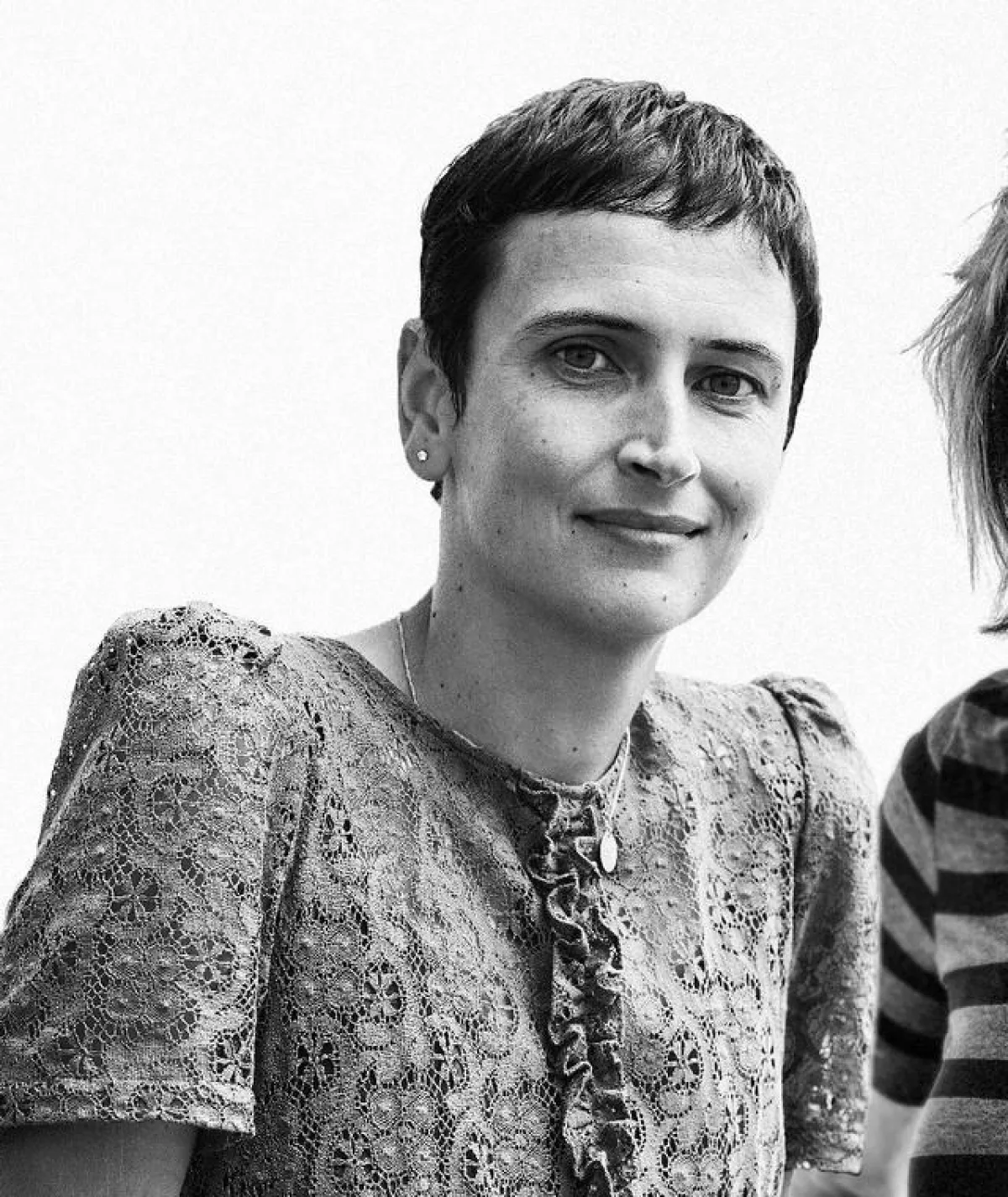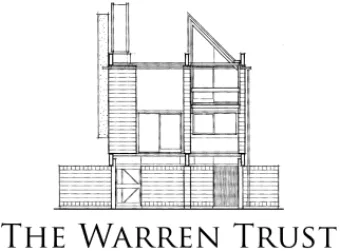In conversation with Teena Hale Pennington, NZIA CEO
08 Jul 2013
Teena Hale Pennington has recently been appointed CEO of the NZIA. When Nicole Stock from Architecture + Women spoke to her she had only been in the seat for a few weeks but already she had quite clear goals for the Institute and Architecture in general.
Going right back to basics. What is the NZIA? What is the role of the NZIA in your mind?
I suppose the simplest way to describe it, is that it’s a member-based organisation that exists to further the profession of Architects, and the outcomes of Architecture and the built environment It’s a way and means of connecting the profession, be it a student, graduate, sole-Practitioner, large firm or retired Architect. The profession is highly collegial, Architects enjoy collaboration, and the Institute makes this easy, whether it's continuing professional development, conferences and seminars, technical advice on contracts or Government regulation changes - the Institute provides a reference point for the profession to connect. It is also an advocate on behalf of Architects for issues of the day. At the moment, two of the topical issues are housing affordability and the Auckland Unitary plan. The Institute provides Architects with a coordinated voice on matters of public debate and the built environment.
Do you feel the architecture community feels led and guided by the institute? How would you describe that relationship between architects and their Institute?
I think it’s a healthy relationship and obviously one of longevity. The Institute was formed in 1905 so it’s been around for a long time and evolving to meet the needs of members. Professional bodies don’t exist for that period of time if they aren’t needed or thought of as being important. The fact that we are still here in 2013 is testament that the profession sees value in a Member-based Institute.
I think what we’re seeing is change in the profession., The needs and demands on the Institute need to adapt to changing Member needs. Take for example, continuing professional development for members. The ability to reach Members across the country means the Institute needs to think about the role of technology. It’s also about connecting across different professions and Institutes. Historically we have collaborated with Architects, however today’s challenge is collaboration across the built environment – Engineers, Landscape Architects, Designers, Quantity Surveyors, Builders, etc.
With the new LBP scheme, how is that going to affect architects?
I think its early days yet around the LBP scheme, but it is something that will create change in the industry. I don’t think we can say with certainty yet what it will mean for Architects, however I do think it’s impacts will increase with other changes in the sector (i.e. Construction Contract Amendment Bill, Resource Management Act Reforms, post Canterbury Royal Commission) being proposed by Government. I think it’s watch this space in terms of the LBP because of the other changes that are happening. I do think it will prompt a closer look at the registration requirements for Architects and what a Registered Architect means in the building and construction sector. It could be an opportunity to redefine the role and significance of the Registered Architect.
With such changes happening, the Institutes’ challenge is to be involved and have a voice. So you may be aware that the Minister recently called for new board members and a chair of the Licenced Building Practitioner board. We have made nominations to the Minister for these roles. Having Members involved improves the professions understanding of the scheme, and how it will operate on a day-to-day basis.
What is your background, what have you done before this?
I have spent time between New Zealand and Australia. I’ve predominantly worked in a government space, local government in New Zealand, state and local government and for Ministers in Australia. I’ve also worked in the private sector, in a large engineering firm, in building and construction. So I’ve predominantly spent my career to-date in planning, design, building, construction, and across a diverse mix of projects, be it policy, regulatory reform, new residential developments large scale infrastructure (roads, bridges, electricity transmission lines, golf courses) and asset management planning. My previous role was with Wellington City Council, and I was responsible for leading the thinking and strategy development for the future of New Zealand’s capital, including its built form.
How did I land here? I took some time out after I left the Wellington City Council, and I toyed with the idea of Le Cordon Bleu and the furniture making school in Nelson, given I had some time to try some things, and Le Cordon Bleu isn’t in your backyard everyday. So I figured that must be a sign, so I was ready to enrol.
And then a few people suggested that I should go for this job. At first, I wasn’t sure, but after finding out a little more, the rest is history, and well, here I am. So I’ve had to park Le Cordon Bleu and furniture making, but hopefully they’ll take me back at some other point in time.
Moving between New Zealand and Australia, would that allow a closer or better relationship between the institutes?
I’m hopeful that it is advantageous in terms of the personal contacts that I have in Australia. The ability to connect with the Australian Institute of Architects (AIA), and draw on the ANZAC spirit. The Tasman relationships are strong in a number of areas – and I think Architects and Architecture is a good fit for these connections. There are plenty of opportunities, take for example – the coordination of events and international speakers. Adding New Zealand to a speaker’s itinerary is easy when they’ve already dealt with a long-haul flight. Whilst simple, such initiatives would be positive for both Institutes’.
What are your goals for the NZIA?
That’s a really tough question as I’ve only been in for the role for a short time. I do have some ideas that I have been sharing with Members, though.
I would like to see the Institute considered as a trusted advisor. I want the Government to pick up the phone and think of the Institute when they’re thinking of changes to regulation or thinking of changes to things that might affect Architects.
I want the public to have a better understanding of the role and value of Architects, what they bring to the built environment. It’s an incredible challenge given that a lot of the design outcomes that Architects produce are an experience, and that’s very hard to put into words, and that’s something I’d really like to see us make some in-roads on.
The other is around more tangible relationships with other Member Institutes. So I think there is a real opportunity to form networks and links with other Institutes formally, particularly in the way we run some of the activities, like training, professional development and seminars. I don’t want people to think it’s uncommon for us to be working for IPENZ or DINZ … I think that’s to the benefit of our Members but also the built environment.
The other is probably around communication. We have eight branches around the country. The challenge is for National Office to connect with and to understand what the local issues are, and to involve local Branches in key issues. I’m keen for the local voice to be heard. It’s important that I am visible for our Members across the country and that the Institute makes available resources for local Branches to be effective locally. One of the areas I’ve targeted is utilising the media. That is a channel and a voice, and local branches have an incredibly good opportunity to promote Architecture and the value of it locally, prove to people what the results of it are on the ground, but also celebrate the good work that they’re doing. We are planning some training for local Branches on working with the media, so hopefully this will see some good local stories on local Architecture.
What are some of the difficulties facing the industry?
I think one of the biggest issues is the lack of appreciation or understanding of the value of design and design thinking. There is tremendous value in this thinking, however it is often overlooked or value engineered out of project, often because it is not well understood.
I think the relationship between Engineers and Architects in response to seismic issues is a challenge. I do however have confidence in the Institute and its Members rising to the challenges. I believe some innovative responses will emerge across the respective professions from this challenge.
Some of the other challenges are around the misconception of Architects. You may often hear that architects are expensive…
…they don’t listen, they always go over budget…
I think the challenge is that we need to communicate and demonstrate the role and value of Architects. Demonstrating that is challenging as the work is diverse (residential, commercial and community areas) and the Architects involved vary in Practice size (solo, small, medium or large sized firm). We need to show and prove to the public and decision-makers that Architects are involved in all sorts of design outcomes. So that’s an education programme.
The other is the role of technology in the Architectural practice. I think it’s going to hugely change the way practices are set up and how they are managed. Take for example, the role of on-line consenting, I think that will change the way practices are set-up. It will raise questions such as - what technology to invest in, the need for cloud computing, how to manage the privacy of information and what information is stored and backed up.
Are there specific difficulties facing women in architecture?
These are just personal observations, given my short time so far in this role. The low numbers of women in the profession has surprised me. Being new, it’s always a challenge remembering people’s names. Whilst feeling overwhelmed with names, I can probably remember most women’s names as they’ve been severely outnumbered wherever I’ve been. Some of the challenges that I see relate to women in senior leadership positions.. My initial scan doesn’t show a lot of women in higher -level positions across some of the bigger practices, and I’m not sure why that is.
I think there is a tremendous opportunity for women in Architecture. Given that the profession operates from a single practitioner right through to being part of a large firm, there is enormous scope for women to find the right practice and environment for them. This is an opportunity not offered in some other professions.












